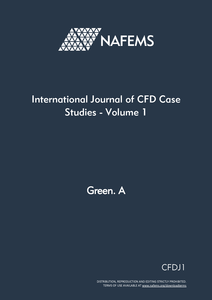 | This publication is a welcome and timely addition to the current CFD Journal literature focused on progress in algorithms and methodology, as it aims at presenting industrial views and experience in the current practical application of Computational Fluid Dynamics. It is therefore representative of the evolution and state of the art of CFD in the 1990’s, where CFD is becoming a widely used tool in a large range of industrial areas. |
The case studies presented in this first issue are representative of the many unanswered questions and problems associated with the industrial applications of CFD. In particular the critical questions of quality and trust of CFD results, range of validity of physical models, mesh dependence, required convergence levels and numerical scheme accuracy, are some of the essential issues to be dealt with it in the process of validation and certification of CFD tools. Gaining more reliability and quality assurance of CFD simulations is a major concern, as it will determine the future of industrial CFD. Providing guidelines and answers to some of the listed questions and problems is indeed of critical importance, and the present NAFEMS initiative is a worthwhile contribution towards the achievement of these objectives.
It is also not surprising that the development of appropriate guidelines for Computational Fluid Dynamics quality assurance has been taken up by ERCOFTAC, (European Research Community On Flow, Turbulence And Combustion), the most active European network in this area, as a major objective for the next two years. The awareness of the importance of these issues has indeed led ERCOFTAC to launch a Special Interest Group (SIG) on ‘Quality and Trust in Industrial CFD’, under the chairmanship of Dr T. Hutton. Major objectives of this SIG, which relies on the active participation and contributes from industrial companies and CFD software vendors of most of the European countries, can be stated as follows:
It is clear that the NAFEMS International Journal on CFD Case Studies could become an important link within this European initiative.
Initiatives such as these should therefore contribute to the progressive transition from ‘qualitative’ CFD to ‘quantitative’ CFD in the industrial applications. This requires an increasing level of rigour in terms of error estimation and control, mesh (in)dependence, quantitative validation and evaluation of results. We express the hope that the NAFEMS International Journal on CFD Case Studies will extend these requirements to all its contributors in the future and we are pleased to congratulate NAFEMS for this initiative wishing the Journal much success.
Information
| Reference: | CFDJ1 |
| Author: | Green. A |
| Published: | 1st May 1998 |
| Audience: | Analyst |
| Language: | English |
| ISSN: | 1462-236X |
| ISBN: | 978-1-910643-94-5 |
| https://doi.org/10.59972/s6bfyhxl | |

Stay up to date with our technology updates, events, special offers, news, publications and training
If you want to find out more about NAFEMS and how membership can benefit your organisation, please click below.
Joining NAFEMS© NAFEMS Ltd 2025
Developed By Duo Web Design